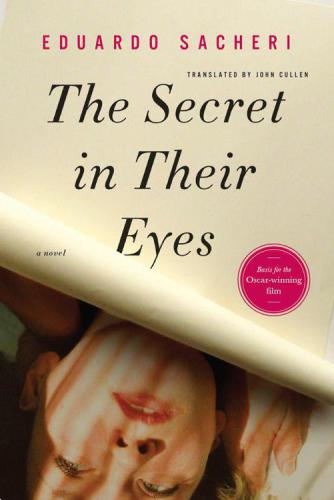
The Secret in Their Eyes
A Novel
کتاب های مرتبط
- اطلاعات
- نقد و بررسی
- دیدگاه کاربران
نقد و بررسی

August 15, 2011
In Argentinian author Sacheri’s beguiling novel, the basis for the 2010 Academy Award–winning film El secreto de sus ojos, Benjamín Chaparro, a recently retired deputy clerk for Argentina’s investigative court, sets out to write a novel about a case that has haunted him for decades: the 1968 rape and murder of a beautiful young woman, Liliana Colotto. Chaparro’s original investigation into the case became so dangerous that he was forced to flee Buenos Aires until the “Dirty War” officially ended in 1983. Since Liliana’s murder, her devastated widower, Ricardo Morales, has devoted his life to exacting vengeance on his wife’s killer and on the corrupt political machine that enabled the killer to go free. Chaparro’s own unrequited love for Irene Hornos, once an intern and now a powerful judge, gives the Morales case an added resonance. Extracts from Chaparro’s novel in progress blur the line between fiction, reportage, and memoir, as do the other parts of this complex and engaging narrative.

July 1, 2011
A brutal murder is the starting point for this strange, compelling journey through Argentina's criminal-justice system; the Argentinian writer's 2005 novel inspired the same-named film that won the 2009 Foreign Language Oscar.
Buenos Aires, 1968. Chaparro is a deputy clerk in the Palace of Justice. That title suggests a nobody. He's not. He oversees police work at crime scenes, such as the murder of Liliana Colotto, a young married schoolteacher. She has been raped and strangled. The conscientious 28-year-old also accompanies the detective to inform her husband, a bank teller. Chaparro bonds with the devastated Morales, who is not under suspicion, and intervenes when two dark-skinned workmen from the building are brought in and roughed up, blatant racial profiling. He has them released and files a complaint against their accusers; then, with masterful insight, he singles out the likely suspect as Morales is sorting through old photographs. One young man, Gómez, is gazing at the future victim, the adoration clear in his eyes. Chaparro's hunch proves correct, but the whereabouts of the presumed killer are unknown, so Chaparro must bend the rules to keep the case from being sealed. All this intrigue is handled beautifully, as are the subsequent twists and turns: the arrest of Gómez four years later on an unrelated charge, his imprisonment, his surprise release and Chaparro's own sudden vulnerability (he must be whisked out of town to a safe jurisdiction). Morales is memorable, too, a baleful presence intent on only one thing: revenge. Still, the novel is hardly without flaws. There is a secondary story line: Chaparro's undeclared, lifelong love for a married judge. The story starts languidly with Chaparro's retirement and his decision to write about the Morales case. At intervals, the clerk turned writer pauses to wonder how he should proceed. These are irritating distractions from the novel's theme: a good man working to secure justice in a fractured system.
A view of the world as a dark place illuminated by personal loyalties.
(COPYRIGHT (2011) KIRKUS REVIEWS/NIELSEN BUSINESS MEDIA, INC. ALL RIGHTS RESERVED.)

September 1, 2011
Murder, revenge, and lost opportunities dominate this mystery, set in Argentina during the 1970s--the time of the Dirty War. (First published in 2005 as La pregunta de sus ojos, Sacheri's popular novel was the basis for the 2010 Academy Award-winning Best Foreign Film.) The core story is framed as a novel being written by the tale's protagonist, Benjamin Chaparro, who investigates a young married woman's horrific rape and murder many years ago. The novel is partly a study of Argentina's corrupt justice system, marked by a great disparity between those aspiring to uphold the law and those hungering for power, revenge, and personal gain. Though the story-within-a-story technique tends to slow the pace of the novel, the main story line is intriguing and often riveting. VERDICT This book is primarily a murder mystery, but the focus on 1970s Argentina and the internal angst of the protagonist add layers of complexity. Highly recommended for readers with an interest in suspense, history, and the human psyche.--Catherine Tingelstad, Pitt Community Coll., Greenville, NC
Copyright 2011 Library Journal, LLC Used with permission.

























دیدگاه کاربران